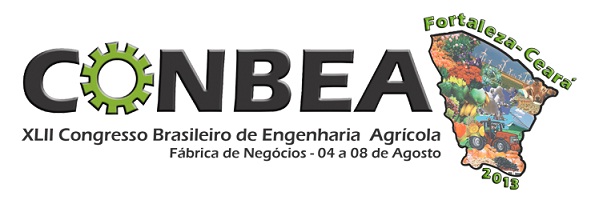Ver ítem
- xmlui.general.dspace_homeCentros e Institutos de InvestigaciónCIA. Centro de Investigaciones de AgroindustriaInstituto de Ingenieria RuralPresentaciones a Congresosxmlui.ArtifactBrowser.ItemViewer.trail
- Inicio
- Centros e Institutos de Investigación
- CIA. Centro de Investigaciones de Agroindustria
- Instituto de Ingenieria Rural
- Presentaciones a Congresos
- Ver ítem
Dosificación variable de agroquímicos : empleo de un sistema basado en la modulación del ancho de pulsos : resultados preliminares
Resumen
El manejo sitio-especifico de insumos es una herramienta útil para mejorar la eficiencia de las labores. En el caso de la aplicación de agroquímicos existen varios sistemas para modificar el caudal asperjado. En el Instituto de Ingeniería Rural – INTA se desarrolló un dispositivo que permite realizar un cambio en el caudal mediante la apertura y cierre de una electroválvula, modulando el ancho del pulso (PWM) de la misma. En el presente trabajo se evaluó
[ver mas...]
El manejo sitio-especifico de insumos es una herramienta útil para mejorar la eficiencia de las labores. En el caso de la aplicación de agroquímicos existen varios sistemas para modificar el caudal asperjado. En el Instituto de Ingeniería Rural – INTA se desarrolló un dispositivo que permite realizar un cambio en el caudal mediante la apertura y cierre de una electroválvula, modulando el ancho del pulso (PWM) de la misma. En el presente trabajo se evaluó el desempeño del sistema mediante la caracterización de la pulverización. Para ello se determinó el caudal real, el diagrama de distribución y el tamaño de gotas. Se utilizó una boquilla marca TeeJet de abanico plano 8002 y se configuró el PWM para proporcionar los siguientes porcentajes del caudal total: 100, 90, 70, 50, 30 y 10 %. Los ensayos de caudal y distribución se realizaron en un banco de distribución que responde a la norma ISO 5682/1. En la medición del tamaño de gotas se utilizaron tarjetas hidrosensibles y el software Spray-X. El procesamiento estadístico de los resultados fue realizado mediante análisis de varianza (ANVA). El sistema PWM no afecto significativamente los caudales, la distribución ni el tamaño de las gotas para los distintos caudales evaluados.
[Cerrar]
Site-specific agricultural management of inputs is an useful tool for improving the efficiency of labors. Considering agrochemical spraying techniques, there are different systems for modifying the flow sprayed. In the Institute of Agricultural Engineering - INTA was developed a device which allows a change in the flow rate by opening and closing a valve by using pulse width modulation (PWM). The aim of this paper was to evaluate the performance of the
[ver mas...]
Site-specific agricultural management of inputs is an useful tool for improving the efficiency of labors. Considering agrochemical spraying techniques, there are different systems for modifying the flow sprayed. In the Institute of Agricultural Engineering - INTA was developed a device which allows a change in the flow rate by opening and closing a valve by using pulse width modulation (PWM). The aim of this paper was to evaluate the performance of the system by the
characterization of the spray. In order to achive this goal the real flow, the distribution diagram and the
droplets size were determined. It was used a TeeJet flat fan 8002 nozzle. The PWM system was configured in order to provide the following total flow rates percentages: 100, 90, 70, 50, 30 and 10%. Flow and distribution tests were performed in a distribution bank which responds to ISO 5682/1. Water sensitive cards and Spray-X software were employed for the measurement of droplet size. The statistical processing of the results was performed by analysis of variance (ANOVA). For the different flow rates evaluated, the PWM system did not significantly affect the flow rate, the droplets size and the distribution.
[Cerrar]

Fuente
42 Congresso Brasileiro de Engenharia Agrícola, Fortaleza, 4 al 8 de agosto de 2013
Fecha
2013-08
Editorial
SBEA
Formato
pdf
Tipo de documento
documento de conferencia
Palabras Claves
Derechos de acceso
Abierto
 Excepto donde se diga explicitamente, este item se publica bajo la siguiente descripción: Creative Commons Attribution-NonCommercial-ShareAlike 2.5 Unported (CC BY-NC-SA 2.5)
Excepto donde se diga explicitamente, este item se publica bajo la siguiente descripción: Creative Commons Attribution-NonCommercial-ShareAlike 2.5 Unported (CC BY-NC-SA 2.5)


